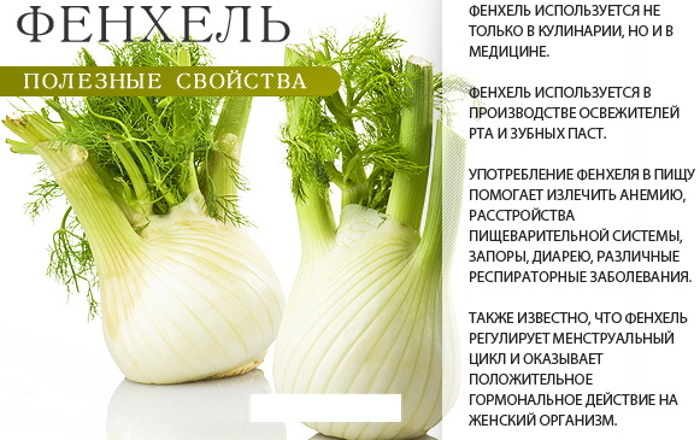Content
- What is meant by atony of the bladder
- Reasons for development
- Why does it develop after childbirth
- Should the condition be treated?
- Symptoms
- Danger and possible complications
- Diagnostics
- Treatment of bladder atony
- Strengthening gymnastics
- Diet
- Behavioral treatment
- Drug treatment
- Symptomatic treatment
- Physiotherapy to stimulate the bladder
- How long is atony treated
- Video about bladder atony
Atony of the bladder - this is one of the disorders of the urinary system, which occurs equally often in both men and women. Pathology requires compulsory therapy, since it can lead to complications.
What is meant by atony of the bladder
Atony is a dysfunction of the bladder caused by various disorders of the nervous system. Pathology is characterized by the inability to accumulate and excrete urine.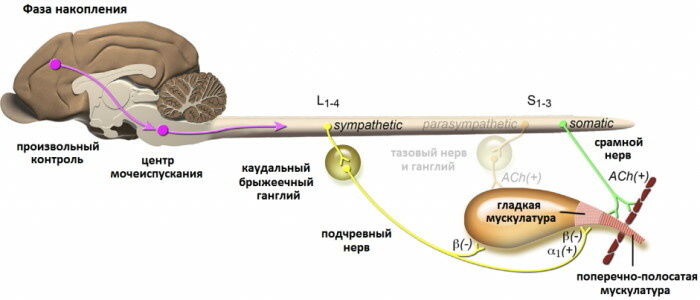
With the disease, there is a violation of the functional ability of the walls of the bladder, against the background of which there is spontaneous excretion or, conversely, urinary retention.
Reasons for development
The disease has a neurogenic origin and is associated with damage to the nervous system. In this case, the problem may arise during life or be congenital.
Possible reasons:
- inflammatory processes in the bladder area;
- deformation of the organ sphincter (stretching, weakening);
- cystitis;
- changes or disturbances in hormonal levels;
- prolonged use of a catheter, which provoked a sphincter distension;
- organ deformation caused by age-related changes;
- trauma to the organs of the urinary system;
- bacterial, viral or fungal infection of the body that affects the nervous system;
- stressful situations;
- trauma and damage to the spinal cord or brain;
- urolithiasis disease;
- congenital defects in the structure of the bladder, nervous system, spine;
- tumor diseases affecting the nervous system;
- carrying a child and childbirth.
Also, pathology can develop against the background of various neurological diseases. That affect the normal functioning of the organ.
Why does it develop after childbirth
Violation can occur as a result of labor. This may be due to injuries. Received during the passage of the child through the birth canal or other complications, including infections. Also, a violation can occur due to excessive overstrain and activity of the nervous system or the organ itself.
Should the condition be treated?
Atony of the bladder in women requires compulsory medical care, because in the absence therapy, the disease can develop into other forms of disorder and lead to health risks consequences.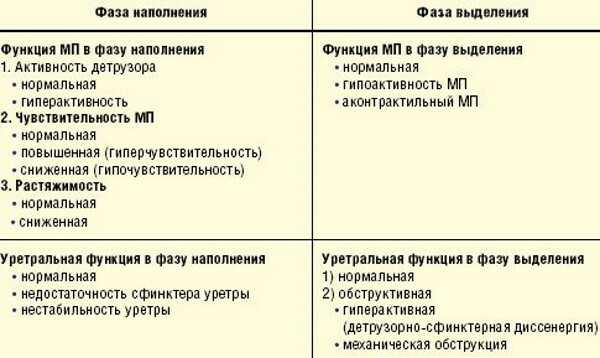
In this case, other (neighboring) organs and systems can be involved in the process.
Symptoms
The symptomatology of the disease can be different depending on the nature of the origin and other associated factors. In this case, the severity of the disease depends on the severity of its course and the presence of other concomitant disorders.
Signs:
- feeling of incomplete emptying of the bladder;
- frequent use of the toilet;
- spontaneous urination;
- pain in the lower abdomen;
- increased sweating (hyperhidrosis);
- an increase in blood pressure;
- retention of urine;
- tension and discomfort in the pelvic area.
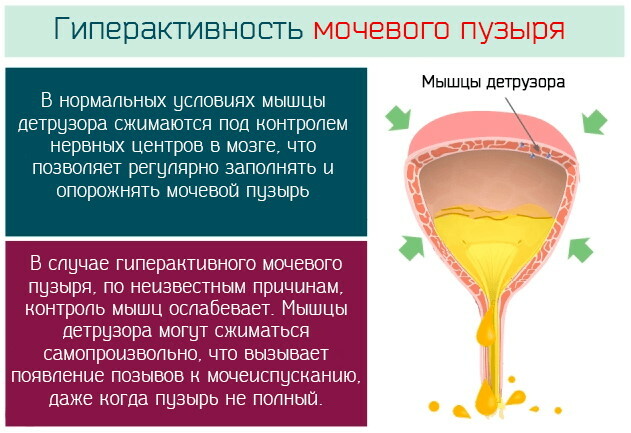 At the same time, depending on the form (hyper- or hypoactivity of the bladder), the patient has a strong desire or its complete absence to empty. The process of urination in this case is not controlled.
At the same time, depending on the form (hyper- or hypoactivity of the bladder), the patient has a strong desire or its complete absence to empty. The process of urination in this case is not controlled.
Danger and possible complications
If untreated, pathology can lead to the development of additional complications.
Effects:
- deforming changes in the structure of the organ;
- chronic cystitis;
- the formation of salt deposits (stones) in the urethral canal;
- infectious lesion of the renal system;
- inflammation of the kidneys (nephritis).
In more severe and complex cases, the disease can lead to the development of renal failure and the occurrence of secondary inflammatory-dystrophic disorders of the urinary system.
Diagnostics
The presence of the disease can be diagnosed using various methods - instrumental and laboratory.
First of all, the patient is examined, anamnesis is taken, complaints are heard. Then various tests are assigned to clarify the severity of the violation and identify its possible causes.
Research methods:
- General and biochemical analysis of blood and urine - allows you to determine the presence of inflammatory or infectious processes. The most effective diagnostic methods are urine test according to Nicheporenko or Zimnitsky's functional test.
- Ultrasound of the kidneys and bladder - the examination helps to detect structural changes in the organ.
- MRI - the technique allows you to identify the presence of various neoplasms.
- Cytoscopy is an endoscopic examination of the bladder surface.
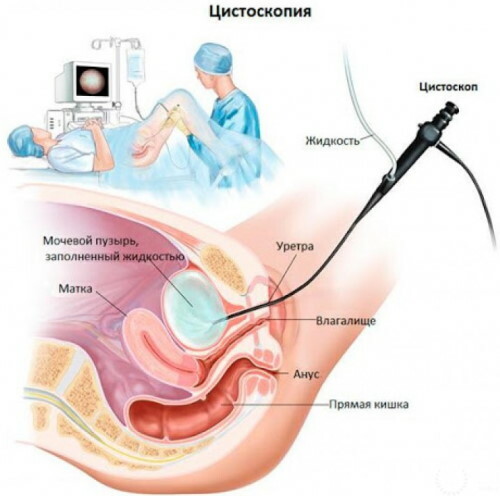
- X-ray - urography, pyelography, renography.
- Urodynamic diagnostics - examinations are prescribed to determine the functions of the bladder, sphincter, pressure in the urethra.
In the absence of any pathological changes in the organ, studies of the brain and nervous system are prescribed - CT, MRI, X-ray of the skull and spine.
Differential diagnostics is also carried out to separate atony from prostatic hypertrophy and stress urinary incontinence and elderly patients.
Treatment of bladder atony
Atony of the bladder in women requires immediate medical attention. Treatment of pathology is carried out in several stages, including rehabilitation measures and supportive therapy.
In this case, the treatment of the disease is carried out in a comprehensive manner. At the same time, treatment methods are selected individually according to the established reason.
With a mild and moderate course of the disease, drug therapy is carried out with additional therapeutic measures. With the development of severe complications, patients are recommended surgical intervention.
Treatment is carried out in conjunction with a neurologist and urologist.
Strengthening gymnastics
The most suitable exercise for urinary disorders is Kegel gymnastics. The exercise begins with a slow contraction of the pelvic muscles. Then they hold this state for several seconds, after which they slowly relax.
The second stage of gymnastics is performing contractions. Alternately tense and relax the pelvic muscles. At the same time, the tempo is gradually increased with each repetition. At the end of the exercise, pushing movements are performed, as if they want to excrete the rest of the urine.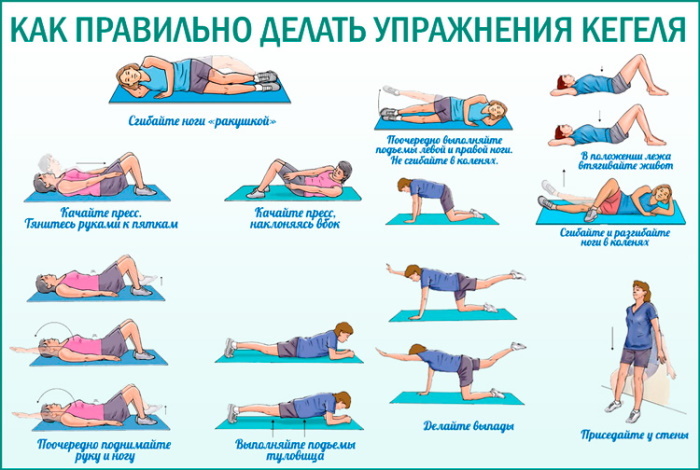
It is recommended to repeat the exercise cycle for 1 month or as recommended by your doctor.
The number of exercises per day is 5 times. The first exercise is recommended for 10 approaches, adding 5 more approaches every week.
The maximum efficiency of gymnastics is noted when performing 150 approaches for each exercise per day.
Diet
Diet food is aimed at preventing the development of irritation in the area of the urinary organ.
First of all, it is necessary to exclude from the diet products that have a diuretic effect or affect the mucous membrane of the urinary tract.
In this case, you should refuse to eat 3 hours before bedtime and do not abuse food shortly before walking.
What foods need to be excluded from the diet:
- Tea, coffee, energy drinks. These products enhance the diuretic effect and can irritate the mucous membranes of the bladder walls.
- Soda. Some of the drinks may contain sugar, so they should be discarded, since negative symptoms may increase.
- Milk products. They have a diuretic effect. These foods should be reduced or eliminated entirely, especially with evening meals.
- Alcohol. They have a diuretic effect and lead to an imbalance in water balance.
- Vegetable products. May lead to irritation of the mucous membrane of the walls of the bladder (especially foods containing various acids). Some of them can have a pronounced diuretic effect. This list includes: cranberries, mint, apples, ginger, persimmon, chamomile.
It is also recommended to avoid eating sugar substitutes, as such foods can increase the diuretic effect.

When following a diet, it is required to adhere to the correct drinking regimen. It is recommended to consume 1.5-2 liters of liquid per day. More water intake leads to more frequent urge to urinate, less water can provoke irritation of the mucous membrane.
Behavioral treatment
Atonic disorders occurring in the bladder area can be eliminated by correcting the woman's behavior. To do this, you must follow a whole range of different rules and recommendations.
Behavioral therapy implies a change in habits and the environment that affects the aggravation or development of pathology.
Recommendations:
- strict adherence to the diet prescribed by the doctor;
- giving up bad habits - smoking, alcohol;
- avoidance of stressful situations;
- timely treatment of various diseases - infectious, inflammatory and especially nervous;
- moderate exercise, hardening (to strengthen the immune system).
Behavioral therapy also includes work with the bladder. In addition to basic exercises, it is necessary to correct the urge to urinate behavior. To do this, at the first sign, you must begin to perform the exercise until the urge subsides. In this case, you should refrain from going to the toilet.
Certain objects or rooms (bathrooms, toilet) can cause an urgent urge to urinate. To stop these symptoms, you should sit down and do quick exercises to relax and contract the pelvic muscles several times. Only after eliminating the urge can you go to the toilet.
It is believed that weight loss has a positive effect on pathology.
Drug treatment
As a supplement, various medications are used.
Possible groups of funds (by active substance):
-
M-anticholinergics - help to reduce the overactive bladder while helping to relax the smooth muscles of the urinary tract. Names: oxybutynin chloride, trospium chloride, tolterodine tartrate, solifenacin.
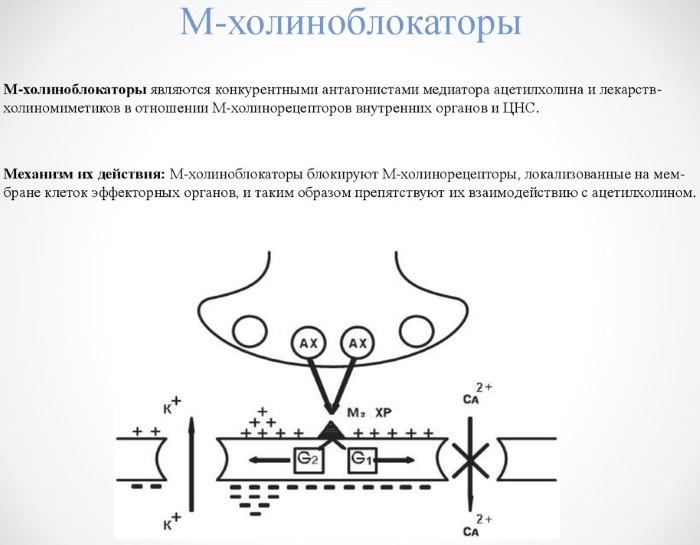
M-anticholinergics. Mechanism of action - Beta-2-adrenergic agonists - contribute to the relaxation of the organ during periods of urine accumulation. Names: Mirabegron. The drugs can lead to the development of side effects in the form of tachycardia, tremors and increased blood pressure.
- Tricyclic antidepressants - are used as part of complex treatment with limited courses. Drugs: amitriptyline and imipramine. Medications help to stretch the bladder during sleep and increase the tone of the sphincter. They also lower blood pressure and body temperature.
- PDE-5 inhibitors - allow to reduce the severity of the violation. Medications: sildenafil, tadalafil, vardenafil. The drugs were previously used in the treatment of erectile dysfunction in men, but at the moment they have shown high efficiency in bladder disorders.
With reduced bladder tone, it is recommended to use parasympathomimetics. However, their effectiveness in this case has not been fully proven.
Additionally, alpha-blockers (terazosin and doxazosin) and centrally acting muscle relaxants (baclofen or tizanidine) may be prescribed to treat disorders of the urinary sphincter. These funds help to eliminate negative signs and reduce the tone of the bladder.
Symptomatic treatment
Atony of the bladder in women often occurs in conjunction with other pathologies that affect the disease itself or are provoked by the underlying pathology. In this case, various medications are used that act on the symptoms that have arisen and directly on the causes of the disorder.
Symptomatic therapy is prescribed for the development of complications and other disorders associated with the onset of the underlying disease.
Most commonly used alpha1-adrenergic blockers, which are used for various problems with urination.
With the development of pain syndrome, various painkillers are prescribed - Ibuprofen, Indomethaitsn, Tempalgin.
In case of an increase in blood pressure, antihypertensive drugs (ACE inhibitors, diuretics, calcium or angiotensin antagonists) are used.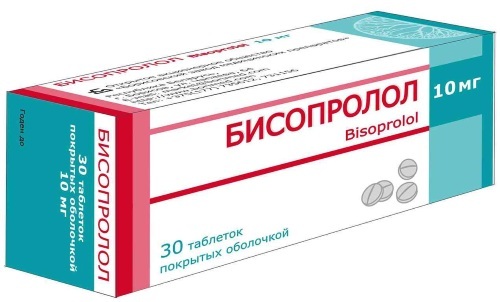
| Name of drugs | Pharmacological group | Action |
| Bisoprolol | Beta1-adernoblocker | It has a membrane-stabilizing effect, has an antianginal, antiarrhythmic and hypotensive effect. |
| Indapamide | Diuretic | It has a hypotensive effect, blocks slow calcium channels, helps to reduce the sensitivity of the vascular wall. |
| Losartan | Antihypertensive combined agent | It has diuretic properties, controls blood pressure, increases uric acid in the blood. |
| Verapamil | Calcium channel blocker (BMCC) | It has antiarrhythmic, antianginal and antihypertensive activity. |
| Cardosal | Angiotensin 2 receptor antagonist | Helps lower blood pressure levels. |
| Captopril | ACE inhibitor | It leads to a decrease in blood pressure, reduces platelet aggregation, increases coronary and renal blood flow, reduces manifestations of myocardial hypertrophy and arterial walls. |
 Additionally, various mineral and vitamin complexes are used as a general strengthening treatment. The dosage forms of the prescribed drugs can be different. In more severe cases, the use of intravenous infusion or injection is indicated.
Additionally, various mineral and vitamin complexes are used as a general strengthening treatment. The dosage forms of the prescribed drugs can be different. In more severe cases, the use of intravenous infusion or injection is indicated.
Physiotherapy to stimulate the bladder
Atony of the bladder in women requires auxiliary treatment, regardless of the nature of the origin of the disorder.
At the moment, several types of physiotherapy are used, which have shown high efficiency in the treatment of atonic disorders.
Exposure methods:
- Electrical stimulation - tibial neuromodulation. It is carried out with the help of low discharges of electric current emanating from a needle or cutaneous electrode. The main advantage of this method is the absence of side effects.
- Treatments with antispasmodic effect - electrophoresis with anticholinergics, paraffin applications, ultrasound treatment.
- Sedative methods of physiotherapy - electrosleep therapy, galvanic collar according to Shcherbak.
- Techniques with a myostimulating effect - electrophoresis using proserin or galantamine, diadynamic therapy.
The number of sessions for each procedure is determined by the attending specialist. In most cases, 10 sessions are enough to achieve a pronounced therapeutic effect.
Each method has its own duration of exposure and the therapeutic effect provided, so that or another method is selected individually, taking into account the physiology of the patient and the nature of the course of the disease.
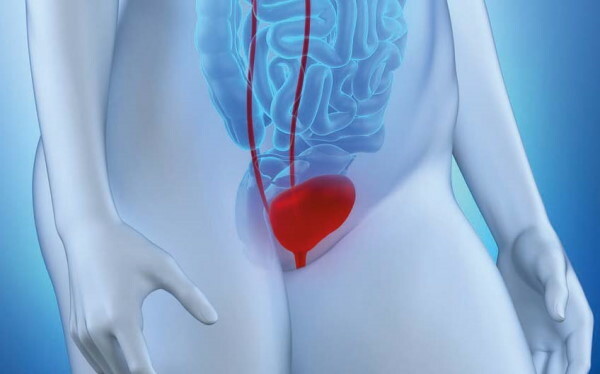
Today, the most relevant and effective method is electrostimulation (biofeedback therapy), since its application allows you to influence several areas at once.
How long is atony treated
The duration of therapy is determined individually according to the form and severity of the disorder. This also takes into account the presence of concomitant diseases and complications.
Subject to all the rules of complex treatment, the first results can be seen within a few weeks. A persistent and pronounced effect occurs within 1-2 months.
With the development of the first signs of atonic disorders in the bladder area, you must immediately contact to a specialist, since the disease can lead to complications and cause problems in women during gestation child.
Video about bladder atony
Bladder dysfunction:

